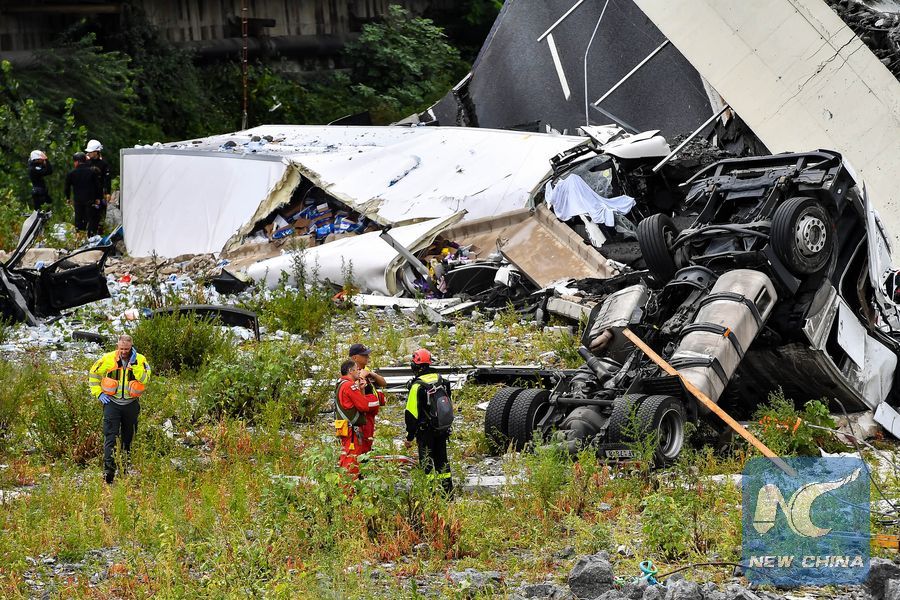
Photo taken on Aug. 14, 2018 shows a partially collapsed bridge in Genoa, Italy. Built in the 1960s, the Morandi Bridge is a major connection for the port city of Genoa. (Xinhua/Alberto Lingria)
LOS ANGELES, July 9 (Xinhua) -- NASA scientists have developed a new technique for analyzing satellite data that can reveal subtle structural changes, according to a release of NASA's Jet Propulsion Laboratory (JPL) on Tuesday.
These changes, which are so subtle that are not visible to the naked eye, may indicate a bridge is deteriorating, said JPL.
After the collapse of the
near Genoa, Italy, in August 2018, which killed dozens of people, a team of scientists from NASA, the University of Bath in England and the Italian Space Agency used synthetic aperture radar measurements from several different satellites and reference points to map structural changes to the bridge -- from 2003 to the time of its collapse.
Using a new process, they were able to detect millimeter-size changes to the bridge over time that would not have been detected by the standard processing approaches applied to spaceborne synthetic aperture radar observations.
They found that the deck next to the bridge's collapsed pier showed subtle signs of change as early as 2015.
They also noted that several parts of the bridge showed a more significant increase in structural changes between March 2017 and August 2018 -- a hidden indication that at least part of the bridge may have become structurally unsound, according to JPL.
"This is about developing a new technique that can assist in the characterization of the health of bridges and other infrastructure," said JPL radar scientist Pietro Milillo.
"We couldn't have forecasted this particular collapse because standard assessment techniques available at the time couldn't detect what we can see now. But going forward, this technique, combined with techniques already in use, has the potential to do a lot of good."
He said the new technique cannot solve the entire problem of structural safety, but can add a new tool to the standard procedures to better support maintenance considerations.
The study was recently published in the journal Remote Sensing.

